Fiat 500 vs Renault Mégane – Differences & prices compared
Compare performance, boot space, consumption and price in one view.
Find out now: which car is the better choice for you – Fiat 500 or Renault Mégane?
The Fiat 500 (Hatchback) comes with a Electric engine and Automatic transmission. In comparison, the Renault Mégane (SUV) features a Electric engine with Automatic transmission.
When it comes to boot capacity, the Fiat 500 offers 185 L, while the Renault Mégane provides 389 L – depending on how much space you need. If you’re looking for more power, decide whether the 118 HP of the Fiat 500 or the 218 HP of the Renault Mégane suits your needs better.
In terms of consumption, the values are 13 kWh per 100 km for the Fiat 500, and 15.40 kWh for the Renault Mégane.
Price-wise, the Fiat 500 starts at 23100 £, while the Renault Mégane is available from 35100 £. Compare all the details and find out which model fits your lifestyle best!
Fiat 500
The Fiat 500 is a compact and stylish city car that has captured the hearts of urban drivers with its charming retro design. Its nimble handling and efficient engine make navigating tight city streets a breeze, while its cosy interior offers a surprising amount of comfort and modern technology. The car's iconic silhouette and vibrant colour options ensure it stands out, offering a unique blend of timeless appeal and contemporary flair.
details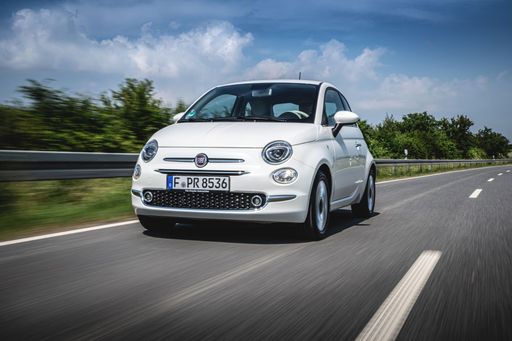 @ media.stellantis.com
@ media.stellantis.com
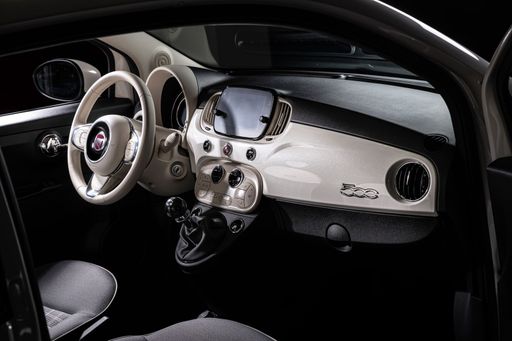 @ media.stellantis.com
@ media.stellantis.com
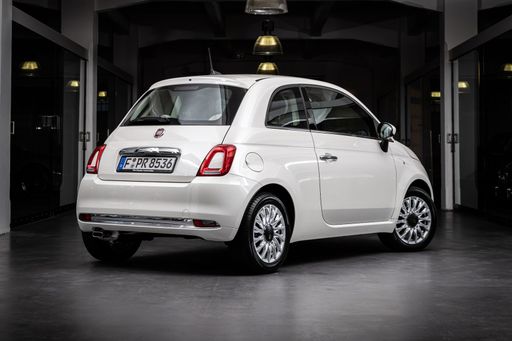 @ media.stellantis.com
@ media.stellantis.com
Renault Mégane
The Renault Mégane stands out in the hatchback segment with its chic design and advanced technology features. Its interior offers a spacious and comfortable environment, providing both driver and passengers with a premium experience. Combining impressive handling with economical efficiency, the Mégane caters to those seeking style and practicality in their daily commute.
details @ Renault
@ Renault
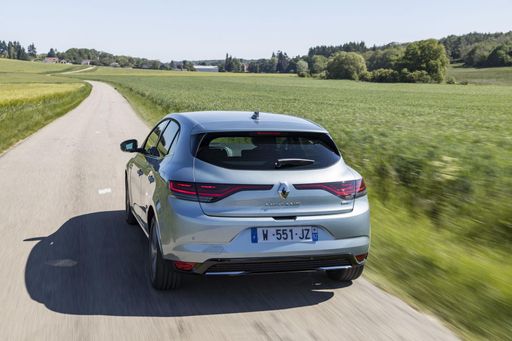 @ Renault
@ Renault
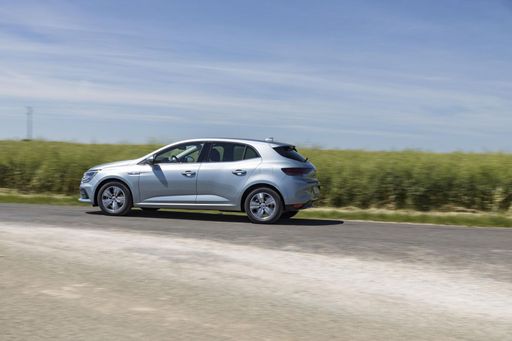 @ Renault
@ Renault
 @ Renault
@ Renault
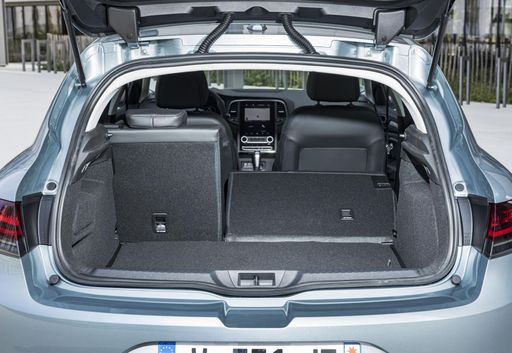 @ Renault
@ Renault

|

|
|
|
|
Costs and Consumption |
|
|---|---|
|
Price
23100 - 35600 £
|
Price
35100 - 38500 £
|
|
Consumption L/100km
-
|
Consumption L/100km
-
|
|
Consumption kWh/100km
13 - 14.7 kWh
|
Consumption kWh/100km
15.40 kWh
|
|
Electric Range
190 - 321 km
|
Electric Range
452 km
|
|
Battery Capacity
21.3 - 37.3 kWh
|
Battery Capacity
-
|
|
co2
0 g/km
|
co2
0 g/km
|
|
Fuel tank capacity
-
|
Fuel tank capacity
-
|
Dimensions and Body |
|
|---|---|
|
Body Type
Hatchback
|
Body Type
SUV
|
|
Seats
4
|
Seats
5
|
|
Doors
3 - 4
|
Doors
5
|
|
Curb weight
1330 - 1475 kg
|
Curb weight
1719 kg
|
|
Trunk capacity
185 L
|
Trunk capacity
389 L
|
|
Length
3632 mm
|
Length
4200 mm
|
|
Width
1683 mm
|
Width
1783 mm
|
|
Height
1527 mm
|
Height
1505 mm
|
|
Payload
250 - 305 kg
|
Payload
446 kg
|
Engine and Performance |
|
|---|---|
|
Engine Type
Electric
|
Engine Type
Electric
|
|
Transmission
Automatic
|
Transmission
Automatic
|
|
Transmission Detail
Reduction Gearbox
|
Transmission Detail
-
|
|
Drive Type
Front-Wheel Drive
|
Drive Type
Front-Wheel Drive
|
|
Power HP
95 - 118 HP
|
Power HP
218 HP
|
|
Acceleration 0-100km/h
9 - 9.5 s
|
Acceleration 0-100km/h
7.40 s
|
|
Max Speed
135 - 150 km/h
|
Max Speed
160 km/h
|
|
Torque
220 Nm
|
Torque
300 Nm
|
|
Number of Cylinders
-
|
Number of Cylinders
-
|
|
Power kW
70 - 87 kW
|
Power kW
160 kW
|
|
Engine capacity
-
|
Engine capacity
-
|
General |
|
|---|---|
|
Model Year
2023 - 2025
|
Model Year
2025
|
|
CO2 Efficiency Class
A
|
CO2 Efficiency Class
A
|
|
Brand
Fiat
|
Brand
Renault
|
Fiat 500
The Timeless Charm: Introducing the Fiat 500
The Fiat 500 has long been a symbol of Italian style and urban practicality. As we navigate a new era in automotive history, the Fiat 500 continues to adapt and remains a much-loved vehicle worldwide. Let’s delve into the latest technical details and innovations that make this car a modern classic.
Electric Heartbeat: The Engines and Performance
The latest Fiat 500 models are powered entirely by electricity, showcasing a commitment to sustainable mobility without sacrificing performance. Under the stylish bonnet lies a choice between two power outputs, starting from a lively 70 kW (95 PS) to an energetic 87 kW (118 PS). This range of electric motors ensures that whether you’re navigating narrow city streets or cruising along open roads, the Fiat 500 delivers engaging performance with zero emissions.
Efficiency Meets Innovation: Energy Consumption and Range
Efficiency is at the forefront of the Fiat 500’s design. With energy consumption figures as low as 13 to 14.7 kWh/100km, the car balances power and performance efficiently. Electric range varies across the models, from 190 km for those designed for short urban commutes to an impressive 321 km for longer journeys. The innovative lithium-ion battery options—spanning 23.8 kWh to 42 kWh—are neatly integrated to maintain the car’s compact dimensions.
Technological Marvel: Smart Features and Design
The Fiat 500 is adorned with advanced features that enhance convenience and safety. It comes with an intuitive infotainment system that includes smartphone connectivity, navigation, and various driver assistance technologies, ensuring a seamless driving experience. The “La Prima” equipment line offers premium materials and a luxurious feel inside the cabin, making every journey comfortable and enjoyable.
Urban Flexibility: Compact Dimensions and Practicality
Designed for urban environments, the Fiat 500’s dimensions make it ideally suited for city dwellers. With a length of 3632 mm, width of 1683 mm, and height of 1527 mm, it’s easy to navigate through traffic and park in tight spaces. Despite its compact size, the Fiat 500 provides a practical boot capacity of 185 litres, perfect for daily errands or a weekend getaway.
Commitment to the Environment: Sustainability Focus
The Fiat 500 exemplifies a dedication to eco-friendliness with its CO2 emissions at zero, earning it an A in CO2 efficiency class. By choosing this vehicle, drivers are contributing towards a future with reduced automotive pollution, supporting cleaner air and healthier urban living.
Conclusion: The Future of Urban Driving
The Fiat 500 perfectly blends timeless style with modern electric innovations, setting a precedent for future city cars. Whether you prioritise aesthetic design, sustainable driving, or a premium driving experience, the Fiat 500 is designed to exceed expectations and redefine urban transportation.
Renault Mégane
Breaking New Ground: The Latest Renault Mégane Models
The Renault Mégane has long been a staple in the line-up of urban-centric and energy-efficient vehicles. As the world leans more towards sustainable driving, the latest models of the Renault Mégane continue to push the envelope with its innovative features and technical prowess.
Innovative Powertrain: The Heart of Mégane
The latest Mégane series comes equipped with an electric motor, offering a performance range of 130 to 218 PS (96 to 160 kW). This ensures that drivers not only benefit from emission-free motoring but also from robust performance figures, with a torque ranging between 250 to 300 Nm. The models are designed to provide a seamless driving experience with their automated front-wheel-drive system.
Efficiency Meets Performance
These Mégane models boast electric consumption figures from 14.9 to 15.4 kWh/100 km, impressive for their class, and are capable of achieving a range between 308 to 460 km on a single charge. The acceleration from 0-100 km/h varies between a peppy 7.4 seconds to a more leisurely 10.5 seconds, depending on the variant, all while maintaining a top speed of 150-160 km/h.
Modern Appeal with Practical Design
Renault’s attention to design is evident in the Mégane's contemporary aesthetic. Whether you opt for the Equilibre, Evolution, Iconic, or Techno trim, each is packed with thoughtful features ensuring comfort for its five passengers and a reasonable boot capacity of 389 litres. The sleek SUV silhouette runs 4,200 mm in length and 1,768 mm in width, giving it a commanding road presence without compromising on practicality.
Cost Efficiency with Zero Emissions
With prices ranging from €35,600 to €45,900, the Renault Mégane offers a competitive edge in its segment. Additionally, the monthly operating costs sit comfortably between €914 and €1,092. The absence of emissions—at 0 g/km—further places these models in the coveted CO2 efficiency class of A, making them a thoughtful choice for environmentally conscious urban drivers.
Conclusion
The Renault Mégane models stand as a testament to the brand's commitment to innovation, efficiency, and style. With its competitive range, pricing, and features, it efficiently caters to the modern driver's needs, balancing power, efficiency, and sustainability seamlessly.
Which drive types are available for the Fiat 500?
Available as Front-Wheel Drive.
The prices and data displayed are estimates based on German list prices and may vary by country. This information is not legally binding.
